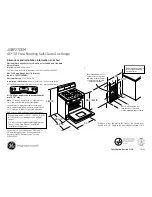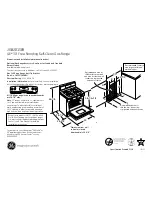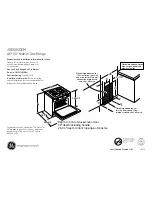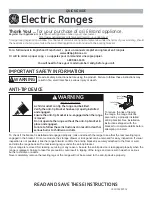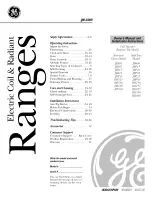
en
Causes of damage
8
]
Causes of damage
Causes of damage
Hob
Caution!
■
Only use the burners when cookware has been
placed on top. Do not heat up empty pots or pans.
The saucepan base will be damaged.
■
Only use pots and pans with an even base.
■
Place the pot or pan centrally over the burner. This
will optimise transfer of the heat from the burner
flame to the pot or ban base. The handle does not
become damaged, and greater energy savings are
guaranteed.
■
Observe the manufacturer's instructions when using
special ovenware.Aluminium foil and plastic
containers can melt and stick on hot burners.
■
Ensure that the gas burners are clean and dry. The
burner cup and burner cap must be positioned
exactly.
■
Clear up spills immediately. Use deep pots for
dishes with a lot of liquid. This will prevent the food
from boiling over.
■
Cooking on gas burners releases extra heat and
moisture. Adjacent units may become damaged over
time. For long cooking times, switch on the cooker
hood or ventilate the room.
■
Ensure that the top cover is not closed when the
oven is started up.
Damage to the oven
Caution!
■
Accessories, foil, greaseproof paper or ovenware on
the cooking compartment floor: do not place
accessories on the cooking compartment floor. Do
not cover the cooking compartment floor with any
sort of foil or greaseproof paper. Do not place
ovenware on the cooking compartment floor if a
temperature of over 50 ºC has been set. This will
cause heat to accumulate. The baking and roasting
times will no longer be correct and the enamel will
be damaged.
■
Aluminium foil: Aluminium foil in the cooking
compartment must not come into contact with the
door glass. This could cause permanent
discolouration of the door glass.
■
Water in a hot cooking compartment: do not pour
water into the cooking compartment when it is hot.
This will cause steam. The temperature change can
cause damage to the enamel.
■
Moisture in the cooking compartment: Over an
extended period of time, moisture in the cooking
compartment may lead to corrosion. Allow the
cooking compartment to dry after use. Do not keep
moist food in the closed cooking compartment for
extended periods of time. Do not store food in the
cooking compartment.
■
Cooling with the appliance door open: Following
operation at high temperatures, only allow the
cooking compartment to cool down with the door
closed. Do not trap anything in the appliance door.
Even if the door is only left open a crack, the front of
nearby furniture may become damaged over time.
Only leave the cooking compartment to dry with the
door open if a lot of moisture was produced whilst
the oven was operating.
■
Fruit juice: when baking particularly juicy fruit pies,
do not pack the baking tray too generously. Fruit
juice dripping from the baking tray leaves stains that
cannot be removed. If possible, use the deeper
universal pan.
■
Extremely dirty seal: If the seal is very dirty, the
appliance door will no longer close properly during
operation. The fronts of adjacent units could be
damaged. Always keep the seal clean.
■
Appliance door as a seat, shelf or worktop: Do not
sit on the appliance door, or place or hang anything
on it. Do not place any cookware or accessories on
the appliance door.
■
Inserting accessories: depending on the appliance
model, accessories can scratch the door panel
when closing the appliance door. Always insert the
accessories into the cooking compartment as far as
they will go.
■
Carrying the appliance: do not carry or hold the
appliance by the door handle. The door handle
cannot support the weight of the appliance and
could break.
■
Grilling: do not insert the baking tray or universal pan
higher than level 3 when grilling. The high heat
distorts it and the enamel may be damaged when it
is removed. At level 4 and 5, only grill directly on the
wire rack.
Damage to the plinth drawer
Caution!
Do not place hot objects in the plinth drawer. It could be
damaged.
Содержание HX9S5IH40Y
Страница 2: ......
























